Most of us have had the pleasure (or pain!) of organising an important event like a wedding, first birthday party or perhaps a 50th celebration, rarely do we put the same effort into planning our career which lasts a lot longer than a day or even a few hours.
Nikki Hobin, FlexCareers CEO and Founder of Flourish Consultancy, immediately engaged the room full of women who were eager to know more about their career calling, with her real-life stories of women she has coached to achieve their desired success. The common theme was they had a plan and they stuck to it.
‘You need to be asking yourself, “What can I do today to maximise my options in the future?”. By answering this question every day, you will keep the momentum and your career in the right direction for you’, explained Nikki. Mapping out your career is a very personal exercise and what is right for one woman won’t suit the next. The most important thing is that you own the decisions you make.
For many women the hardest part of mapping their career is simply starting the planning process. Follow these 6 practical steps to map your career and put yourself on the path to a fulfilling life.
1. Craft your life strategy
Make a coffee date with yourself and spend some time assessing where your life is at and where you want it to be. Time and experiences change us and our ideals so it is always good to re-evaluate our drivers and desires for our lives. And do this every few years and especially when you enter a new phase of life.
TOOL: The Wheel of Life
The 8 pie slices represent the important areas of your life and can be tailored to your specific circumstances. Rate your current satisfaction with each one on a scale of 1 to 10. Then do this again for how you would like your life to look. The areas that need more attention or are out of balance will be easy to spot!

2. Acknowledge your career values and strengths
A key step in mapping out your career is understanding what your career values are. Is flexibility important or perhaps a supportive manager or maybe your financial situation is a key value for you? In order to find a career that fulfils you, you need to know what you will compromise on and what your non-negotiables are. And in order to achieve sustained success in a career, you need to engage your strengths.
TOOL: Values and strengths mapping
Divide a piece of paper into two columns with headers being ‘Career Values’ and ‘Strengths’. Capture what it is you value in a career on the left under Career Values and prioritise your ‘must haves’ and your ‘nice to haves’. On the right side, list your strengths. All of them, work-related or not.
Now, map your strengths to your career values and think of examples where you demonstrated these strengths, not only at work but in your personal life too. For example:
Value – Flexibility : Strengths – well-organised, efficient, focused and goal orientated, determined, interpersonal skills
Value – Supportive manager : Strengths – open and honest communication, goal orientated, reliable, open minded, collaborative/team player
Finally, ask yourself ‘why would I employ me?’ to really uncover what it is you stand for.
3. Find your sweet spot
Leveraging your response to ‘why an employer would employ me’ will help you find your sweet spot. By identifying what it is you are the most passionate about, and which you have the most natural talent to do, you then need to find opportunities to do it. That is your sweet spot.
TOOL: COP model
In areas where you have competency and passion, but no opportunity – that’s a hobby. If you have the competency and an organisational need exists but you lack passion, then it’s going to be a chore. If there is an organisational need and you have passion, but no competency, then you are a rookie. But where they all intersect is the sweet spot – the area in your life/career where you will be at your very best, and the most fulfilled. Competency and opportunity are easier to find or create but passion is hard to formulate.

4. Set short-term professional goals
Setting professional goals clarifies what you expect to achieve and lets you see what you have accomplished. It provides direction and accountability and written goals are one of the top drivers of performance.
TOOL: SMART Goals
S – Specific: state deliverables and outcomes
M – Measurable: establish criteria for success
A – Aggressive: ensure they are challenging yet achievable
R – Relevant: provide purpose and direction
T – Time-bound: have realistic and appropriate time-frame
5. Craft a simple one-page career plan
As the old adage goes, ‘if you fail to plan, you will plan to fail’. Write it down and keep it simple.
TOOL: Plan on a Page
Capture your 2-3 year goal at the top of the page so your plan always has direction.
Goals: capture your SMART goals for the next 12 months
Must do’s: to achieve your goals. Maximum of 4
Focus activities: what you will ACTUALLY do and track how you are doing against it.
Measurement: answer the question ‘I know it is working because….’

6. Execute the plan
Now go forth and achieve your career aspirations. If you are in a role, share your plan with your leader so they can help you achieve your desired success. If you are looking for work, take your career plan into your next interview and wow your prospective employer with your focus and commitment.
TOOL: You!
“A successful life is one that is lived through understanding and pursuing one’s own path, not chasing after the dreams of others,” – Chu Chin-Ning
-->